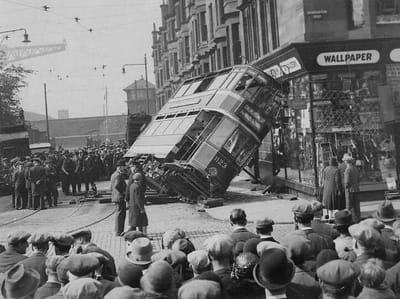history of scotstoun

We wish to make Mora Logan's work on the history of Scotstoun available via this page. You can access that history via the following link:-
https://scara-info.weebly.com/history.html
You may need to copy and paste the above link to your web browser. Here is an introduction to this fascinating document.
History of Scotstoun
The earliest recorded owner of the lands known as Scotstoun was a younger member of the Montgomerie family which hailed from the Mont St Michel area of Normandy . In a Charter of 28th January 1529 , King James V gave Henry Montgomerie " the lands and tenandrie of Scottiston in the viscounty of Renfrew". Presumably young Henry had won the King's favour or Daddy had poured a few 'bawbees' into the Royal Coffers. In 1607 another of that family, Hugh, Lord Montgomerie and Kilwinning, Earl of Eglinton appears to have inherited the lands upon which he built a 'fortalise' (a wee castle), a 'manor' (a big house) and various mills. Tenants were introduced to tend the lands and no doubt provide an income from rents; proving that the 'buy to rent' idea is not such a modern concept. In 1634, John Montgomerie, the last of that family, 'alienated his lands' (transferred them) to a John Hutcheson, Notar and Town Clerk of Glasgow. In 1691, his grandson disposed of them to William Walkinshaw, a Glasgow merchant of the Walkinshaws of Barrowfield family. The Walkinshaws were strong supporters of the Stuart cause which resulted in John Walkinshaw being accused of treason and in 1715 having to flee the country. The lands then passed to the feudal superior, Alexander, the Earl of Eglinton, under an act of Parliament newly passed 'for the encouragement of loyal superiors, vassals, landlords and tenants in Scotland '. In 1729, Lord Eglinton 'conveyed' them to his grandson, Lord Garlies who, in 1750 sold them to William Crawford, eldest son of Matthew Crawford of Balshagray. A year later they were purchased by Richard & Alexander Oswald, Glasgow merchants who hailed from Caithness. The original Scotstoun House, which had been built by the Walkinshaws, stood on the south side of Dumbarton Road in line with the Kingsway Court high flats and commanded a clear view across the river with beautiful grounds and orchards. A new frontage was added in 1825 by Elizabeth Oswald who lived there until her death in 1864. It was eventually demolished to make way for the railway line which now serves as a cycle track. The terraced houses which form the Scotstoun Conservation Area are part of an estate started in 1895 on Dumbarton Road at Lennox Avenue by the Scotstoun Estate Building Company. The red brick homes between Lennox Avenue and Vancouver Road were built specially for the gardeners of the Scotstoun Estate.
See the rest of the story via the above link.
https://scara-info.weebly.com/history.html
You may need to copy and paste the above link to your web browser. Here is an introduction to this fascinating document.
History of Scotstoun
The earliest recorded owner of the lands known as Scotstoun was a younger member of the Montgomerie family which hailed from the Mont St Michel area of Normandy . In a Charter of 28th January 1529 , King James V gave Henry Montgomerie " the lands and tenandrie of Scottiston in the viscounty of Renfrew". Presumably young Henry had won the King's favour or Daddy had poured a few 'bawbees' into the Royal Coffers. In 1607 another of that family, Hugh, Lord Montgomerie and Kilwinning, Earl of Eglinton appears to have inherited the lands upon which he built a 'fortalise' (a wee castle), a 'manor' (a big house) and various mills. Tenants were introduced to tend the lands and no doubt provide an income from rents; proving that the 'buy to rent' idea is not such a modern concept. In 1634, John Montgomerie, the last of that family, 'alienated his lands' (transferred them) to a John Hutcheson, Notar and Town Clerk of Glasgow. In 1691, his grandson disposed of them to William Walkinshaw, a Glasgow merchant of the Walkinshaws of Barrowfield family. The Walkinshaws were strong supporters of the Stuart cause which resulted in John Walkinshaw being accused of treason and in 1715 having to flee the country. The lands then passed to the feudal superior, Alexander, the Earl of Eglinton, under an act of Parliament newly passed 'for the encouragement of loyal superiors, vassals, landlords and tenants in Scotland '. In 1729, Lord Eglinton 'conveyed' them to his grandson, Lord Garlies who, in 1750 sold them to William Crawford, eldest son of Matthew Crawford of Balshagray. A year later they were purchased by Richard & Alexander Oswald, Glasgow merchants who hailed from Caithness. The original Scotstoun House, which had been built by the Walkinshaws, stood on the south side of Dumbarton Road in line with the Kingsway Court high flats and commanded a clear view across the river with beautiful grounds and orchards. A new frontage was added in 1825 by Elizabeth Oswald who lived there until her death in 1864. It was eventually demolished to make way for the railway line which now serves as a cycle track. The terraced houses which form the Scotstoun Conservation Area are part of an estate started in 1895 on Dumbarton Road at Lennox Avenue by the Scotstoun Estate Building Company. The red brick homes between Lennox Avenue and Vancouver Road were built specially for the gardeners of the Scotstoun Estate.
See the rest of the story via the above link.


